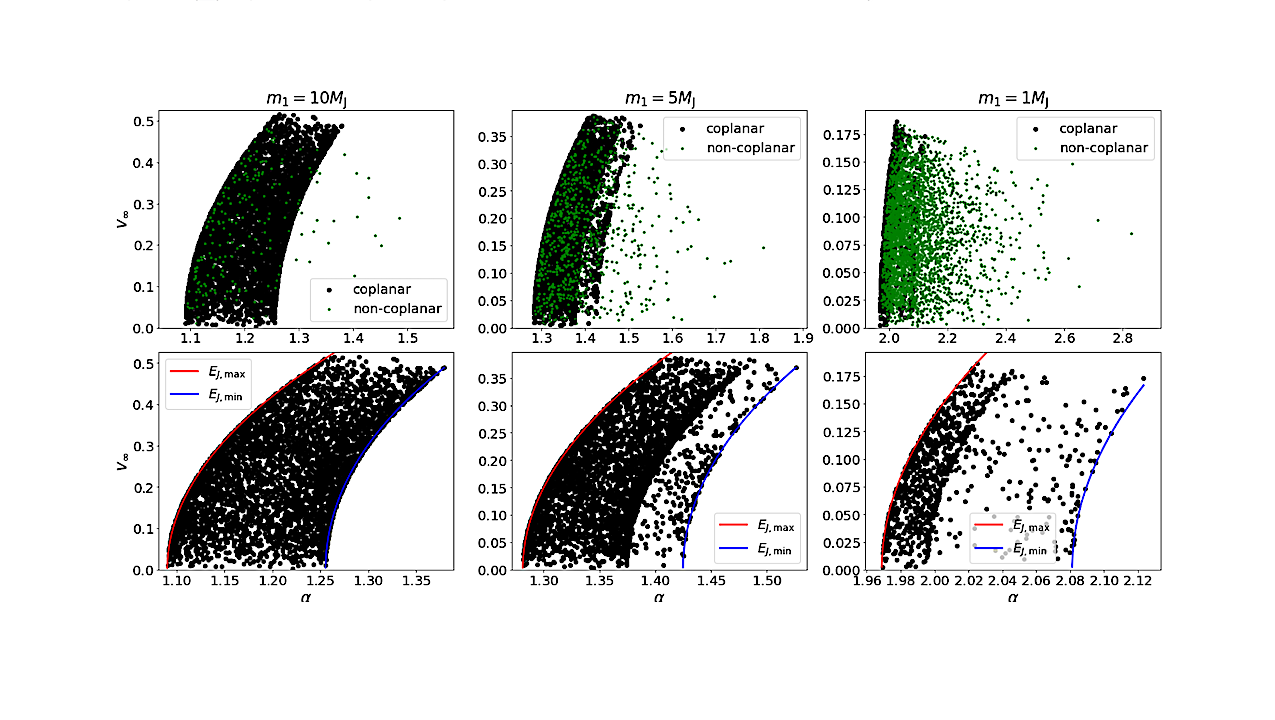Velocity at infinity vs. parameter α for ejected test particles — astro-ph.EP
The discovery of numerous free-floating planets (FFPs) has intensified interest in their origins and dynamical histories.
A leading formation mechanism is planet-planet scatterings in unstable multi-planetary systems, which can naturally lead to planetary ejections. If these planets originally host moons, it remains an open question whether such satellites can remain gravitationally bound to FFPs after ejection.
In this work, we investigate both the ejection velocity of FFPs produced by planet-planet scatterings and the survival rate of their potential moons; we estimate the latter by determining the statistics of the minimum planet-planet distance prior to planet ejection, and comparing it to the initial orbital radius of the moon relative to its host planet. Using the circular restricted three-body framework, we derive an analytical boundary for the ejection velocity based on Jacobi energy conservation, which agrees with the results of integrations.
We also identify a minimum planetary mass required for successful ejection. For two-planet systems with finite planetary masses, we use simulations and analytical arguments to determine how the ejection velocity scales with the planetary mass and initial semi-major axis.
Extending our analysis to three-planet systems yields similar results, reinforcing the robustness of our conclusions. These findings offer insights into the property of FFPs and inform future efforts to search for exomoons around them.
Xiumin Huang, Dong Lai
Comments: 14 pages, 14 figures
Subjects: Earth and Planetary Astrophysics (astro-ph.EP); Astrophysics of Galaxies (astro-ph.GA)
Cite as: arXiv:2508.18239 [astro-ph.EP] (or arXiv:2508.18239v1 [astro-ph.EP] for this version)
https://doi.org/10.48550/arXiv.2508.18239
Focus to learn more
Submission history
From: Xiumin Huang
[v1] Mon, 25 Aug 2025 17:28:29 UTC (867 KB)
https://arxiv.org/abs/2508.18239
Astrobiology,

